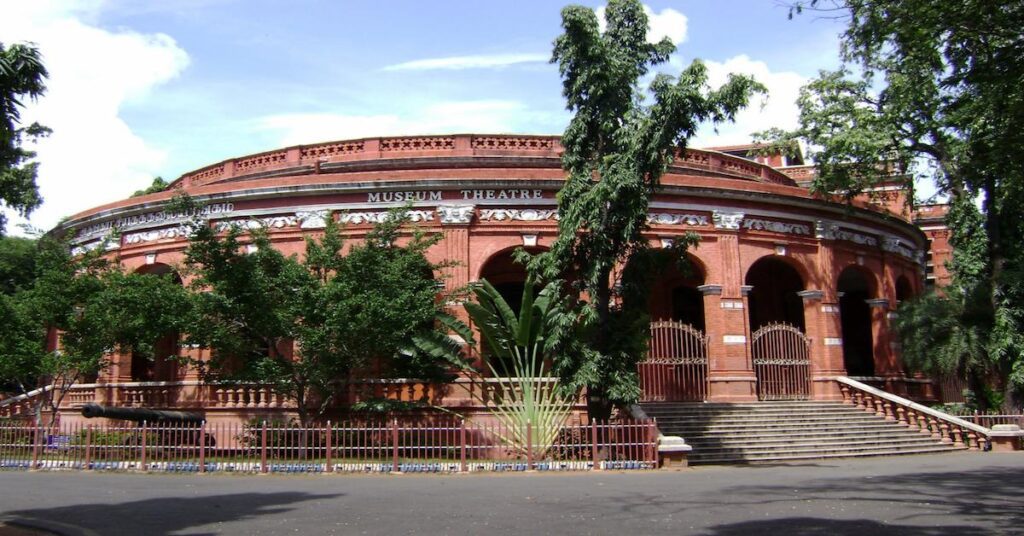GOVERNMENT MUSEUM CHENNAI
The Government Museum, Chennai, or the Madras Museum, is a gallery of mankind’s set of experiences and culture situated in the Government Museum Complex in the neighborhood of Egmore in Chennai, India. Begun in 1851, it is the second most seasoned gallery in India after the Indian Museum in Kolkata.


Credits: wikipedia
LOCATION OF MUSEUM:
The exhibition hall is situated in what is known as the Pantheon complex, or “public gathering rooms.” It is situated in the Government Museum Complex on Pantheon Road in Egmore. The street on which the gallery is found also takes its name from the complex. The Government Museum Complex additionally houses the Connemara Public Library and the National Art Gallery.
HISTORY:
In August 1778, the legislative head of Madras conceded 43 sections of land for a domain to a government worker, who, consequently in 1793, relegated the grounds to a panel of 24 which then directed the public diversions in the city. In 1821, the board of trustees sold the principal house and focal nursery space to E. S. Moorat, an Armenian trader who, thus, sold it back to the public authority in 1830.
The public authority previously involved the structures and the grounds as the gatherer’s “Cutcherry” and later for the “Focal Museum.” The gallery was initially settled in a structure on College Road in Nungambakkam in the year 1851 and was moved to the current site in 1854. The exhibition hall’s assortments had their starting point from an endowment of an assortment of 1,100 geographical examples.
It was done by the Madras Literary Society to the Government in 1851. The historical center, the principal government-supported one in the nation, opened that very year on the main floor of the College of Fort St. George, contiguous to the Literary Society in Nungambakkam, with a display of almost 20,000 uninhibitedly gifted examples going from rocks to books.
THE MUSEUM COMPLEX:
The gallery complex comprising six structures and 46 displays covers an area of around 16.25 sections of land of land. The items shown in the gallery cover various antiquities and articles covering different fields including prehistoric studies, numismatics, zoology, regular history, models, palm-leaf original copies, and Amravati artworks.
The historical center for youngsters in the perplexing houses is a few static shows, for example, displays of dolls decorated with outfits of different countries and civilizations and displays relating to science, transportation, and technology.[
Importance of Government Museum Chennai
As a rich store of the best works of art of craftsmanship, paleontology, humanities, numismatics, and significantly more, the Madras Museum guarantees to bait the whole gang. Spread across an area of 16.25 sections of land, the Government Museum is additionally considered a real part of the biggest exhibition halls in South Asia.
CONCLUSION:
The National Art Gallery of the exhibition hall shows conventional works of art, Indian small-scale fine arts, canvases of Thanjavur, and other collectible and customary compositions. Then again, the Contemporary Art Gallery incorporates ancient British works of art as well as contemporary compositions. The primary things of this historical center that are exciting and charming are the world-striking Amravati figures.
Credits: Accessible Art History
FAQ’S
What are the facts about the Government Museum Chennai?
The Government Museum, Chennai, also known as the Madras Museum, is a historical and cultural museum situated in the Egmore neighborhood of Chennai, India., The Indian Museum in Kolkata, established in 1851, is the second oldest museum in India.
What are the 5 functions of the museum?
The 5 Functions of the museum are
1. To Collect,
2. To Organize (or classify),
3. To Display,
4. To Instruct its audience, and
5. To project a sense of the nation.
